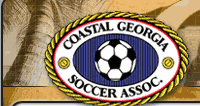There are different definitions of fitness actually means, but one common way it is described is as the 5 S's
skill
Two other S's sometimes associated with describing fitness are
spirit (psychological aspect)
One key element is specifity, in that what you want to be fit for, determines which of these S's has the most weight or importance. For example, a golfer would not need much speed but would need a lot of skill.
A 100m sprinter, needs speed, strength, but not much stamina, a gymnast needs strength, skill, suppleness and stamina. However this stamina is different from the type of stamina that an endurance runner needs.
Team sports like soccer make it even harder to determine what areas of fitness are required. The types required will depend upon positions and role in the team, but one key area is skill and specifity. Soccer players should be soccer players first and athletes second. This doesn't mean that their athletic areas of fitness, speed, strength, stamina etc. are not important, because they are, but skill and specifity and perhaps spirit are the most important.
Having said that, a very skillful player who cannot last the whole match due to lack of stamina, or cannot get to the ball due to lack of speed, is not as useful to the team as the player who has slightly less skill, but more speed and stamina.
There are two specific types of stamina that we are interested in and these aerobic and anaerobic.
aerobic
Aerobic fitness determines the level at which you can take in and use oxygen to perform an activity. An activity like walking doesn't put much stress on your body and most people can cope with this aerobic activity. Aerobic activities are activities like jogging, where you can continue without getting too tired. You work at a rate which means you don't get completely fatigued or out of breath. Aearobic training will increase the level at which this fatigue takes place, and will make your heart and lungs more efficient for exercise. You will be able to run further and faster before getting tired.
anaerobic
Anaerobic fitness determines the level at which you can work at a high intensity. This usually means short bursts of activity, where you will often be out of breath. You are working at a level where your body cannot provide enough oxygen and your muscles need to get energy from glycogen. You can only work for a short time at this level before you get too fatigued and go into something called "oxygen debt". An examples of anaerobic exercise is sprinting. Anaerobic training, will make your body more efficient at using glycogen as a stored fuel and also help it deal with oxygen debt. One effect of oxygen debt is the build up of lactic acid, which is felt when your legs for example, feel a burning sensation at the end of an intense long sprint. This lactic acid needs to be removed from muscles as quickly as possible and anaerobic training helps make your muuscles more efficient at coping with lactic acid and better at removing waste products from muscles.
soccer fitness
Soccer players need a combination of aerobic and anaerobic fitness due to the nature of the game and the fact that there is continuous movement with lots of short bursts of more intense activity. Some positions require higher levels of anaerobic fitness than others, some require more aerobic fitness. A midfield player, is required to cover a lot of ground during a game and needs a good aerobic engine. A striker on the other hand requires short bursts of repeated activity and requires more speed and anaerobic fitness.
One key aspect of fitness that soccerfitness.net recognises is that each player is different and has different training requirements dependant upon their inherant physical abilities, their desire to train, age and position played. Soccer is a team sport and as such, players train together as a team. This is important for many reasons, but it also means that not all conditioning type sessions or activities have equal benefits across all players.
Where time is available to test and analyse results, it is much better if programs can be tailored for each player or group of players with the same requirements. I feel this is important from around the age of 13 and up, when the effects of training have much more of an impact. Conditioning and speed training at 10-13 years has less impact. A recent FA coaching report, suggested that players 10-12 benefit from training in that it prepares them physically and mentally for training when they are older. Their motor skills develop and they learn skills like how to run fast, as well as obvious ball skills when carrying out normal soccer skills training.
Once past puberty, speed endurance and strength, speed sessions will have more impact. Before that stage, sessions should not be too intense, involving shorter sessions with little emphasis on stamina. Plyometrics and strength building activities should be carried it with great care pre-puberty. soccerfitness.net prefers to use low level strength and plyometric exercises with younger players, only to get techniques right, and prepare the body for more intense training when they get older.
At all times, however, speed and conditioning sessions are secondary to work done with the ball. Individual skills and team play are the key elements to successful, but having fitness can only make a good player better.





